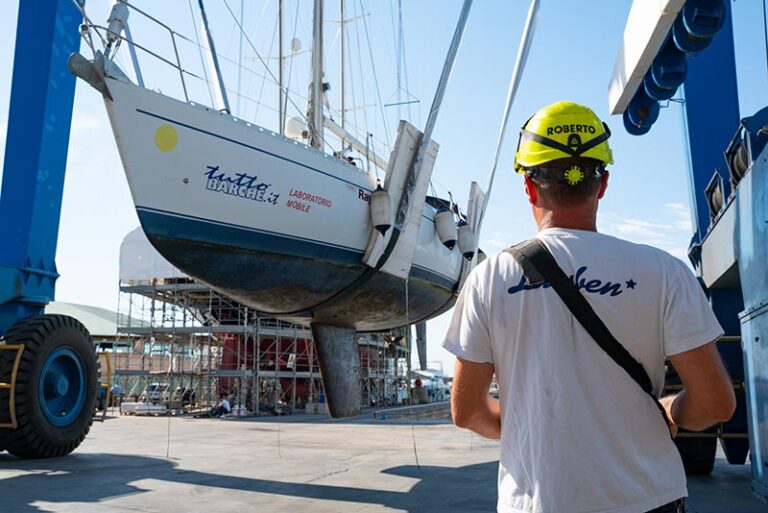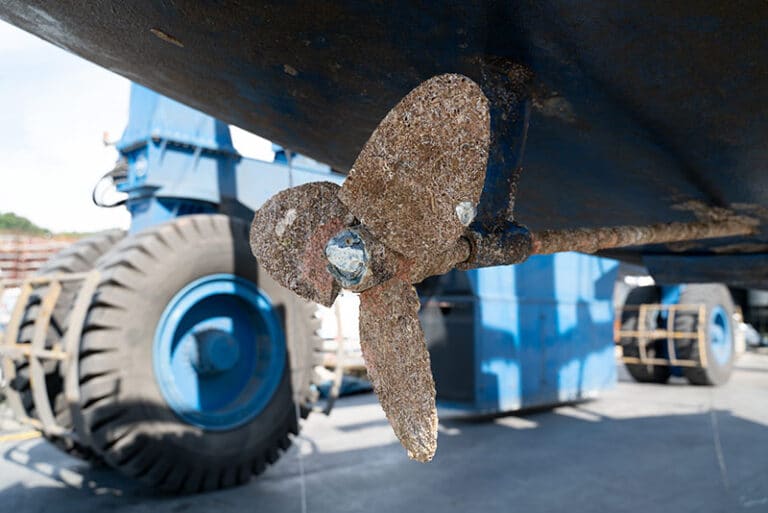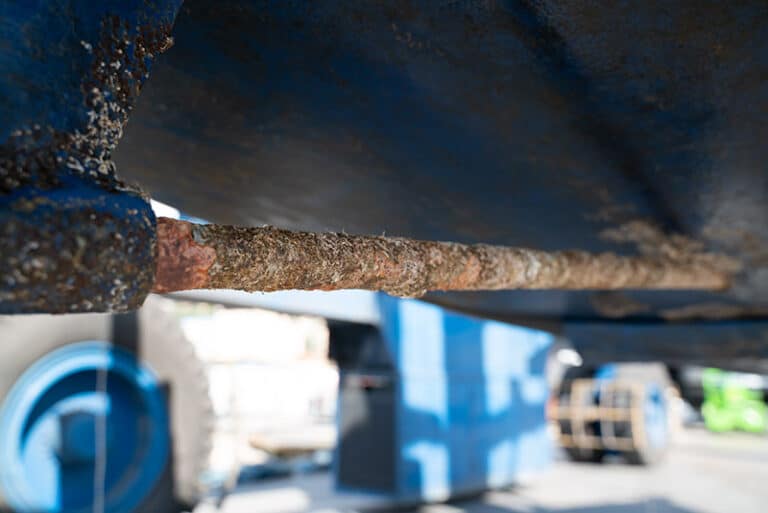Osculati SP Premium 365: the antifouling test carried out on our lab-boat
Daydreamer, the Comet 460 of The International Yachting Media, has 
We have chosen this product because Osculati antifouling paints are copper-free and compatible with any hull (fiberglass, aluminium, wood, etc). There are two main types of antifouling paints: self-polishing and hard matrix.
Self-polishing paints gradually wear over time, thus helping to keep the hull clean. Hard matrix paints, instead, do not suffer wear and perform their task only chemically. Consequently, they are suitable for fast hulls (over 25 knots) and long navigations.
Our choice fell on Osculati SP Premium 365, a self-polishing antifouling paint, suitable for keeping the boat in water throughout the year, excellent for fiberglass hulls, resistant to both fresh and salt water and with a good yield of around 8 m²/l.
Osculati SP Premium 365: application phases
Application consists of some specific steps: once the boat is hauled out, the hull must be cleaned with a pressure washer and sand with an orbital or by hand with some sandpaper. When necessary, small grouting operations can be carried out with some white Gelcoat (code 65.520.06).

The primer we choiced is the Osculati two-component A+B: a universal two-component epoxy primer compatible with any kind of surface, both bottom and upper works. This primer has an anti-corrosion and insulating action. 2 to 4 thick bottom layers are recommended to make the antifouling paint adhere perfectly.
Let us also remember that every haulage is always an opportunity for us to carry out other very important periodic checks. Simple to perform, they can be done on our own or with the help of specialized personnel to understand if it is appropriate or not to intervene, in order not to find bad surprises once the boat is put back into the water. Among them, we remind to check the state of wear of seacocks and drains, which can be done by opening and closing them from the inside to see if the mechanism works correctly.
The check list also includes the zincs or sacrificial anodes that, attracting the galvanic currents, wear out quickly, and the o-rings, i.e. all those plastic gaskets that are connected to the sensors and the instruments that pass through the hull. Don’t forget the log probe, which must be cleaned gently, as well as the echo sounder probe that, we remember, should not be covered with the antifouling paint so as not to disturb the signal.
Lastly, we recommend to remove any traces of rust on the keel and apply the two-component epoxy primer (code 65.621.20) before the antifouling coat. Check the propeller shaft by grasping it and moving it a little; if you have an S-drive, we recommend checking the seals.
Our mobile lab Daydreamer will soon return to the water. In the coming months, we will check the effective operation and wear of the antifouling paint. Stay tuned!




























One Response
¿Que resultado tuvo la prueba de antifouling OSCULATI 365?